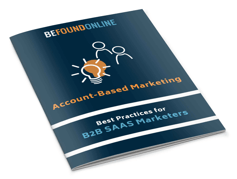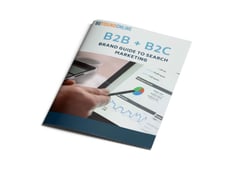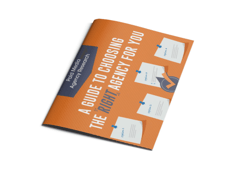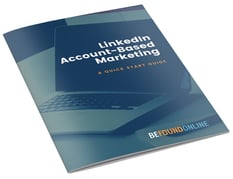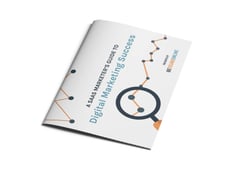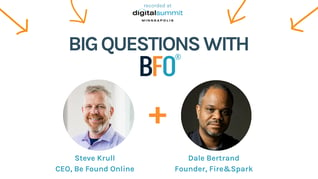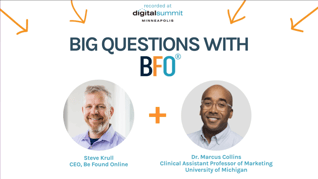When It's Smart To Use Smart Campaigns (And When It's Not)
August 11, 2021
6 Minute Read

What is the difference between a regular Google Ads campaign and a “smart” Google Ads campaign? A smart campaign will save you time by automatically adjusting your bids to what it thinks are the most profitable keywords. But with so many variables, it can be difficult to know when this type of automated targeting would be beneficial and when it might save you time only at the expense of revenue. In this article we will help you determine when “smart” is smart.
What is a Google Ads Smart Campaign?
A smart campaign is a type of Google Ads campaign that can automatically adjust your bids to what it thinks are the most profitable keywords. It’s called “smart” because, if you have no idea how much to bid on certain terms, this feature will figure out what is best for you and make better decisions than you would without having any information about your market niche. Smart shopping campaigns are smart campaigns applied to the Google shopping ads experience, allowing advertisers to reach users with product listing ads across the Google SERP and Shopping tab.
Similar to when you set up a normal Google Ads campaign, you will need to input certain information that the smart campaign uses in order to make bids: which keyword groupings you would like to advertise on, the location of your target audience, your campaign budget, and a variety of ad creatives. However, unlike a normal campaign, you do not provide Google with specific keywords, a specific bid strategy (maximize clicks, target cost-per-action, etc.), or where you want to advertise.
Google will then manage your campaign for you, mixing and matching your ad creative, creating ad extensions (the sub-links shown below your ad), and using its AI to constantly A/B test new keywords and ad creative to tune your bids to maximize conversions according to performance. Essentially, you give Google a general idea of what you want your advertising campaign to look like, and the basic assets it needs to succeed, and then it does its best to optimize your results. It’s an easy, set-it-and-forget-it tool.
How to use Google Ads Smart Campaigns
To utilize smart campaigns there is a minimum requirements list that must be fulfilled. You can meet these requirements by running a normal Google Ads campaign, which would generate the data that Google’s advanced AI needs to be able to manage your smart campaign for you. Usually 30 days is sufficient for good results, though no specific length is required. In that time, you will need to reach 50 conversions in your Display Network and 100 conversions in your Search Network order for Google to get a sense of how your advertisements will perform. Your Cost-Per-Acquisition (CPA) must also not be too low, as smart campaigns cost Google significant processing resources (you can check if your CPA is high enough in Google Ads).
Once you’ve met the basic requirements, you can create your campaign.
Steps for a Smart Search Campaign
- Once you have logged into your Google Ads account, click the blue plus sign and select ‘New Campaign’
- Select your campaign goal and ‘Smart’ as your campaign type
- Fill in your business description as you would for a normal campaign
- If your audience has a specific geolocation, add those by city or region. The options here are not as robust as normal adword campaigns, however.
- Select the keyword themes you think best fit your market niche; Google will automatically pick keywords from these, testing each to see how they perform
- Select negative websites that you want your ads to avoid showing up on. (This is a new feature Google has added, after sustained outcry by marketers. However, they still do not allow negative keywords, which is what we have been asking for all along.)
- Create your advertisement copy. It is sometimes suggested that you do at least two, but we always recommend at least five.
- If you are making a display ad rather than a search ad, here is where you will add in your different art assets. Google asks for a minimum of one rectangular and one square image, but more is always better.
- Set your monthly budget
- Launch your campaign!
Steps for a Smart Shopping Campaign
- Once you have logged into your Google Ads account, click the blue plus sign and select ‘New Campaign’
- Select your campaign goal and ‘Shopping’ as your campaign type and ‘Smart’ as your sub-campaign type
- Enter your campaign name, daily budget, and bid strategy. In the Bid Strategy section you can also set a campaign-level ‘Conversion Goal’ and choose to focus on selling to existing customers, or focusing entirely on advertising to new customers.
- Choose specific products or groups of products that you’d like to advertise in your campaign from your Merchant Center account
- Upload your creative assets and ad copy
- Launch your campaign!
When we said Google Smart Ads were easy to use, we weren’t kidding. This is all it takes to launch a campaign. However, if you are used to running normal campaigns, you may now feel some sense of a loss of control: there is nothing more for you to do. Google will now try to optimize your results for you.
The benefits of using Google Ads Smart Campaigns
Smart campaigns are usually best for companies that want to start advertising online, but have limited funds or staff resources available to spend time on the process. For those businesses that have dabbled in Google Ads campaigns, but have not seen very much success, a smart campaign is a way to jumpstart the process without having to invest time into improving your advertising skills or money into hiring a professional.
Companies that have an existing campaign may also want to use a smart campaign as a way of testing new markets, targeting previous untapped demographics, or simply testing the effectiveness of new advertising copy without taking time away from their other marketing efforts. (Note: when running a Smart Shopping campaign, you will need to explicitly select the ‘New Customer acquisition’ conversion goal if that is the goal of your campaign.) Google’s AI is trained to A/B test content in a way that only the most advanced digital marketing firms have the data analytics skills to do — and at this point, even we use smart campaigns for this purpose on occasion!
The disadvantages of using Google Ads Smart Campaigns
Despite all these benefits, there are some very clear disadvantages to using smart campaigns.
First, for Smart Search ads, keyword targeting is done by theme not by specific keyword. While this is good because it allows Google to A/B test lots of different keywords to see how they perform, keyword themes historically do not r perform all that well: random long-tail keywords are often included, as are keywords that are homonyms (think advertising your ‘metal bar’ construction materials on searches for music venues that play heavy metal music). You also cannot add negative keywords to eliminate the most obvious of these mistakes. Though a smart campaign will discover and prune these keywords before things get too bad, they do decrease your quality score and increase your CPA along the way.
Second, though it is true that Smart Shopping campaigns are a little broader in scope than Smart Ads campaigns, as you can set a bid strategy to optimize for different metrics, you are still totally unable to optimize around specific product sales. You cannot allocate specific budgets to your high-ROI products without creating an entirely new campaign for each item, nor can you allocate budgets for particular placements (e.g. the Google Display Network, YouTube, etc.) based on how well you know each of your items performs on those platforms. Even location and device targeting are absent!
Third, because Google is constantly changing your ads automatically, if anything goes wrong with your campaign (such as low engagement or high bounce rates), it is nearly impossible to find out why without manually reading a lengthy report. When you’ve set up the ads yourself, you know what makes each ad group unique, thus making it very easy to determine how you should change your strategy.
Lastly, if you don’t give Google enough data to work with (100 conversions is the minimum) it will just waste your money. For new businesses, this can be a really difficult lesson to learn, as the whole promise of smart campaigns is that they are a set-it-and-forget-it service. While this is avoidable by running your own campaigns for long enough to generate good results, it is a mistake made far too often.
All in all, Google smart campaigns are something to be used sparingly, despite their claim to be a one-size-fits-all solution. They can produce some fantastic CPAs, well below your normal, but at the same time and in the same campaign, other bids will be incredibly high. In our experience, the aggregate result is a little worse than a normal, managed campaign.
Smart campaigns are best used by firms that have a significant advertising budget ($10,000+ per month) who are looking to save money on data analysts doing A/B testing, or perhaps mid-size firms who already have successful ad campaigns and want to see if Google’s smart campaigns can find a previously-undiscovered audience niche. At BFO we recommend a test budget of 20% of your current Search or Shopping campaign spend when testing Smart Campaigns. This said, always keep in mind that the optimal Ads campaign is one that is properly managed, whether it be using smart campaigns or first starting with a traditional Google Ads campaign. If you need help setting up your new Google Ads campaign, contact us.

Curtiss Gulash
When Curtiss is not being a Brewmeister, brewing amazing craft beers at Big Cat Brewing Company, in Cedar, Michigan, he is BFO’s Paid Media Team Lead with a specialty in marketing automotive brands. Curtiss is known for his super-human energy and loves taking a project from start to completion. He understands the world of digital media through and through and manages to juggle multiple curveballs, be a terrific team player, and a super coach to his staff.
CATEGORIES
SUBSCRIBE TO OUR BLOG
Stay up to date with the latest industry best practices in digital marketing!
















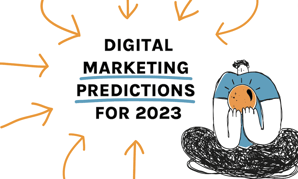
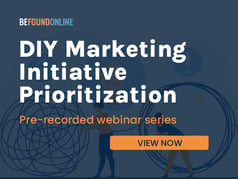
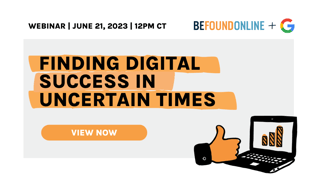




.png?width=339&height=179&name=Webinar%20Banner%20(1).png)

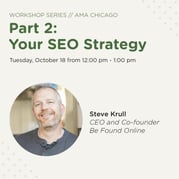
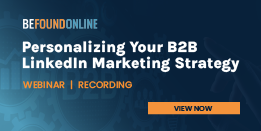
.png?width=339&height=179&name=July%20Webinar%20(Newsletter).png)
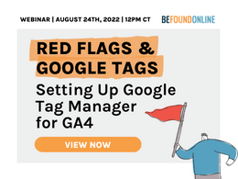
.png?width=339&height=179&name=Webinar%20Banner-April-02%20(1).png)
%20(4).png?width=339&height=179&name=Webinar%20Banner-May-02%20(1)%20(4).png)




.png?width=339&height=179&name=March%202023%20Webinar%20Ad%20(autoresponder).png)

